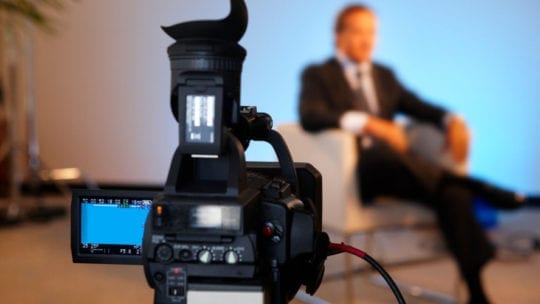
In the legal system, there is a process known as voir dire. This allows attorneys for both sides to question prospective jurors to determine if any are biased or have any prejudices that would not allow them to serve on a jury. Truth be told, many lawyers use the process to assess the personality of the candidates, forming instant judgments based not only on the answers but on appearance, body language, use of words and if they sound scripted, and so much more.
Brand spokespeople are under the same scrutiny—only it’s in the court of public opinion.
That’s where PR professionals come in, to prep the spokesperson for media interviews, making sure they offer the best appearance, are comfortable on camera and stay on message. To be sure it’s not as simple as how to dress, though that certainly is one of the components of preparation. Here’s a look at some of the best practices for readying your company spokesperson for a media appearance.
Research. Good PR officials will track the reporter’s social media accounts as well as read the last five to 10 articles or view the last 5 to 10 television interviews the reporter has done. The idea is to look for tendencies and trends in how the reporter conducts an interview, and what kind of questions are asked, to get a sense where he or she might interrupt to hammer home a certain question or point.
Mock up questions and answers. Most reporters won't provide you with a list of questions ahead of time. Instead, with your research, anticipate the questions that will be asked and arm your spokesperson with the answers. This is especially true in crisis management situations.
Practice makes perfect. Think about taping a mock interview and then watching it with the spokesperson, being mindful of body language (no crossed arms, be sure to maintain eye contact with the interviewer, for instance) and facial expression. Smile if you’re announcing a merger or new product launch; don’t smile if you’re discussing a recall of a half-million cars. Remember that, for better or worse, people form impressions while watching the interview.
Dress to impress. No monochromatic colors, so no black-on-black or white-on-white or red-on-red. No dangling earrings or bangle bracelets or anything that can make noise. Make sure the spokesperson has glare-proof glasses if they wear specs. For women, no short skirts if the interview has you seated with no table in front of you. For men, wear over-the-calf long socks so they don’t droop down and show your leg.
Have three to five talking points at the ready. Do try to find out how long the segment will be. Television producers love the 12-second sound byte but in reality the PR official should train the spokesperson to answer in 30- to 45-second increments. It should be enough to answer a question without belaboring the point and losing the audience.
Pivot to talking points. Just like a politician in a debate, teach the spokesperson when to jump to another point. You’re not necessarily evading a question, just making sure you hit all your talking points. You’re looking to get your message heard; if you wait for the interviewer to ask the ‘right’ question for you to give what you think is a seminal answer, it might never come. So try to pass along the most important message the first chance you get.
